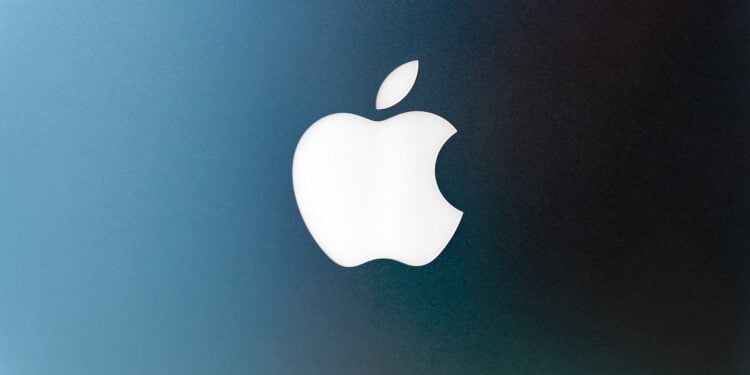Apple is working on taking its display technology to the next level. After using OLED panels in the iPad Pro models, the company plans to expand the technology to other devices—including the iPad mini, iPad Air, and MacBook Pro and MacBook Air. This means a comprehensive display transformation is imminent in the coming years, which should not only bring better image quality but also greater energy efficiency.
OLED displays offer several advantages over traditional LCD panels: deeper blacks, more vibrant colors, and lower power consumption. Apple is already successfully using this technology in its premium models and plans to gradually roll it out to other product lines. According to Bloomberg, Apple is actively working on several new devices with OLED displays. The company is pursuing a long-term roadmap that extends until at least 2028.
iPad mini to switch to OLED in 2026
The iPad mini will be one of the next devices to receive an OLED display. The switchover is planned for 2026. This will be the first time the compact iPad will have the same display technology as the more expensive models. In addition to the new panel, internal sources say Apple could also improve water resistance. This would make the iPad mini more robust and further strengthen its position as a versatile, portable device.
iPad Air will get OLED later
Apple is taking a little more time with the iPad Air. The model, scheduled for release in spring 2026, will retain an LCD display. Only after that will the iPad Air receive an OLED upgrade—probably not before 2027. Apple apparently wants to establish the technology first in the premium models before introducing it to the mid-range.
In the long term, all three higher-end iPads—iPad Pro, iPad Air, and iPad mini—are expected to be equipped with OLED. The cheapest standard iPad, however, will remain LCD to maintain the price advantage in the entry-level segment.
MacBook Pro: OLED possible as early as 2026
Apple is also preparing for the switch to the MacBook lineup. The MacBook Pro will likely be the company's first notebook with an OLED display. According to current information, the update could be released as early as the end of 2026. By using the new panels, the devices are expected to achieve even better image quality and energy efficiency.
OLED technology allows individual pixels to be completely turned off. This makes blacks absolutely dark, and energy consumption is reduced—especially with dark image content or when working in power-saving mode. For professional users who rely on accurate color reproduction, the OLED MacBook Pro should represent a significant upgrade.
MacBook Air: Development underway, but market launch not until 2028
After the MacBook Pro, it's the MacBook Air's turn. Apple has already begun development of an OLED version. However, it won't be released until later—not before 2028. The MacBook Air version planned for spring 2026 will therefore continue to feature an LCD display.
With this staggered price, Apple apparently wants to ensure that OLED production runs smoothly and costs decrease before the technology is used in cheaper devices.
Goal: Uniform OLED strategy in the premium segment
The plan clearly demonstrates Apple's long-term commitment to establishing OLED displays as the standard for its premium devices. Gradually, the iPad mini, iPad Air, iPad Pro, and MacBook Pro and MacBook Air will receive the same high-quality display technology. Only the most affordable iPad will continue to use an LCD panel to keep the price low.
Apple redefines the future of its displays
Apple is consistently pushing ahead with the transition to OLED. Starting in 2026, more and more devices will gradually be equipped with the new display technology. The iPad mini will be the first, followed by the MacBook Pro. The iPad Air will follow later, and the MacBook Air with OLED is expected to be available by 2028. This marks a clear trend: Apple is focusing on OLED as the standard in the high-end device segment in the future. Users can look forward to more brilliant colors, better contrast, and more efficient energy use – a further step in Apple's long-term product strategy. (Image: Shutterstock / Michael Derrer Fuchs)
- iPhone 2027: Haptic buttons instead of mechanics
- iPhone 18: Apple plans simpler design for camera button
- iPhone 17e: Apple brings Dynamic Island to the entry-level model
- Apple will soon add four Pro apps to the iPad
- iPhone 2027 expected with new camera sensor
- iPhone 18 Pro: Apple plans camera with variable aperture
- Apple Maps: Paid search ads to launch in 2026
- Report: M6 iPad Pro gets vapor chamber cooling
- iPhone 18: Apple plans to use 12 GB RAM across the board by 2026
- Apple is apparently rethinking the iPhone naming scheme
- iPhone 18 Pro could get satellite 5G from SpaceX
- Report: Apple considers buying Warner Bros. media library
- iPhone 18: Apple relies on 2nm technology despite additional costs
- iPhone 2026 to 2028: Apple's radical design strategy
- iPad Fold: Apple's expensive future project with 18-inch display
- Apple internal: Doubts about Siri performance under iOS 26.4
- iPhone Fold: Launch could be delayed until 2027
- Apple is working on M5 MacBook Air, Mac Studio and more
- Apple prepares major MacBook Pro redesign for 2026/2027
- iPhone 18 Pro gets camera with variable aperture for the first time
- Apple plans Smart Home Hub with display – launch in spring 2026
- iPhone Fold: Apple's hinge could be cheaper than expected
- Apple develops AR glasses with two modes and visionOS system
- Apple develops H3 chip and prepares new AirPods models





